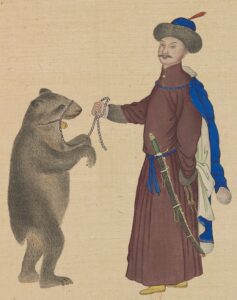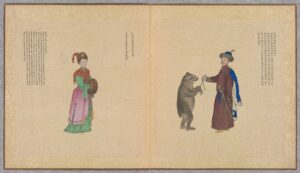An English-language translation of the Qing Imperial Illustrations of Tributary Peoples – a Chinese ethnographic album created at the behest of Emperor Qianlong in the mid-18th century – has recently been published. The publication contains descriptions of peoples with whom the Middle Kingdom maintained contacts, including Poles.
The Qing dynasty (1644-1912), led by the Manchu people and the last dynasty in Chinese history, was a significant power in the Orient for much of its reign. A defining aspect of premodern empires is the concept of a universal empire, where the world is seen as a whole that can be unified under the leadership and charisma of a great king.

One work that exemplified this trait, commissioned by the Qianlong emperor in 1751, is the Qing Imperial Illustrations of Tributary Peoples (Huang Qing zhigong tu 皇清职贡图). The English translation, only recently published, makes this eighteenth century Chinese ethnographic album accessible to a wider audience. Composed of nine scrolls and three hundred portraits of people from various nationalities and regions, the book offers insight into the Qing dynasty’s method of reign and imperial tributary relationships.
Although the Qianlong emperor is framed as a universal ruler and force upon which all people naturally gravitated towards due to his moral and innate superiority in the text, within his vast empire laid a heterogenous landscape of different cultures and peoples with varying degrees of submission. The second to eighth scroll within the ethnographic album records the cultural distinctions and complex political relationships of various groups within the Qing dynasty with the imperial power. The ninth scroll is a continuation, of illustrations that were completed following Qianlong’s twenty-six-year reign. The first scroll, of particular note, offers insight into the people in the periphery of and beyond the Qing empire. Among those described in the first scroll, are the Poles.

Northeast of the Holy Roman Empire, the ethnography describes the Polish region as “cold and wintry,” its people wearing animal skins clothing and hats made from foxes, badgers, sables, and squirrels from early autumn to early summer. Noted Polish hobbies included being “fond of fencing and [raising] bears domestically for use in entertainment.” Local products listed are bees, forests, amber, cattle, and sheep. The Polish women are described as “talented and capable,” managing households unassisted and maintaining both the interior and exterior of the home.
The book can be downloaded for free at: https://brill.com/view/title/60180?language=en.
Author: Anna Zhou





